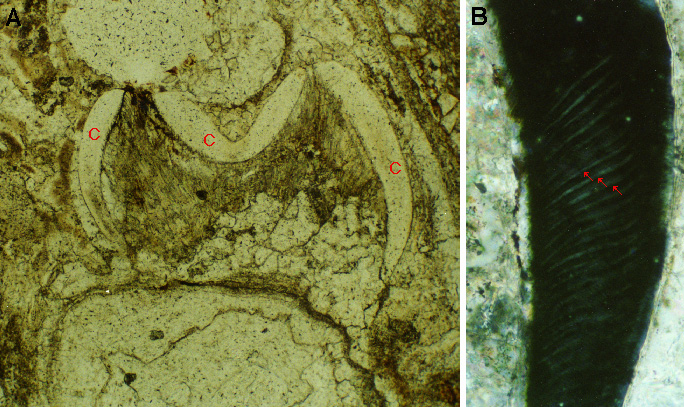| |
Figure 6-3. A: Carapace (C) of an arthropod in a stalactite from Namibia. The carapace is phosphatic (or "chitinous") and is probably of an insect or small crustacean. It is not clear whether the carapace is that of an organism that died on the stalactite, or if the carapace was that of an organism that died elsewhere and whose carapace was washed onto the surface of the stalactite. However, the completeness of the carapace is evidence for the former.
B: View in cross polarized light of the right side of the carapace in A. Like most phosphatic materials, the carapace is almost extinct (i.e., has no birefringence), but a faint modulation of grey birefringence is visible.
Photomicrographs were taken in plane -polarized light (A) and cross-polarized light (B); field of view of A is 1.8 mm wide. Guinas Cave, Namibia; Sample G95-2; thin section G95-2A. Sample collected by Dr. George A. Brook. |
